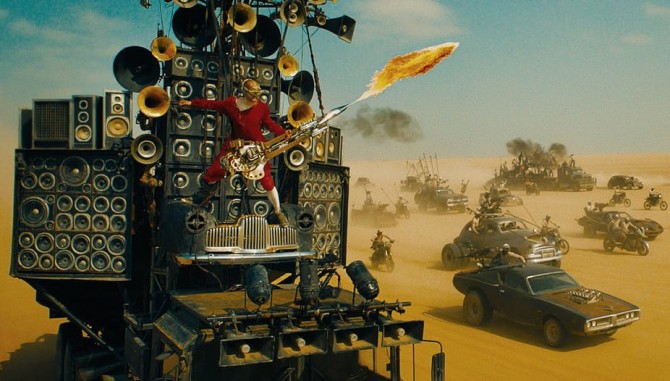Search Results for: scriptshadow 250
If it’s not in your Inbox, check your “SPAM” and “PROMOTIONS” folders!
We’ve got a good one, starting with a sneaky good show that nobody over 25 has heard of. Yet I guarantee once you start watching it, you won’t be able to stop. I give my thoughts on the current shaky state of the superhero genre. I help make sure you never rely on a deus ex machina again. I get into a couple of giant Apple TV sales and what you can learn from them. And I review the best original sci-fi spec of the year.
Oh, and one more thing. I know yesterday’s post was a bit controversial. But I stand by it. Of course there are times where you will write “two people sitting and talking” scenes. But it’s the laziest choice you can make. And if I can be that little voice in the back of your head every time you’re about to write one of these scenes that motivates you to try a little harder and come up with something else? And that leads to 2 or 3 better scenes a script? I’ve done my job.
If you want to read my newsletter, you have to sign up. So if you’re not on the mailing list, e-mail me at carsonreeves1@gmail.com with the subject line, “NEWSLETTER!” and I’ll send it to you.
p.s. For those of you who keep signing up but don’t receive the newsletter, try sending me another e-mail address. E-mailing programs are notoriously quirky and there may be several reasons why your e-mail address/server is rejecting the newsletter. One of which is your server is bad and needs to be spanked.
We’re keeping it going with Sci-Fi Showdown inspired Thursday articles. Remember, the Sci-Fi Showdown deadline is Thursday, September 16th. You can learn more about it here. It’s absolutely free. So get those sci-fi scripts finished and get them in on time. Let’s make a f%$#ing great science-fiction movie together!
One thing I want to point out before I get to today’s tips. A lot of these tips deal with the chase aspect of the film. But these tips can work for ANY type of chase. A car chase. A foot chase. An across-the-galaxy chase. They can also work within chase sequences. So if your script just has one chase sequence, these tips can be applied to that as well. All right. Let’s get to it.
1) 99% of Sci-Fi Movies require voice overs or a title card at the beginning of the movie to explain what’s going on – If you don’t need a ton of explanation to set up your movie, use a title card. If you’ve got a lot to explain, use a voice over. Fury Road uses Max’s voice over. Star Wars uses title cards. I don’t care which you use but you probably need one. If we don’t know how your world operates, we’re going to have a tough time enjoying what’s happening.
2) Urgency and Sci-Fi go together like peanut butter and jelly – The most underrated reason for Star Wars’s success – and I’m talking the original Star Wars here – is its urgency. Urgency can camouflage all sorts of script problems due to the fact that the story’s moving so fast, the reader doesn’t have time to notice problems. Fury Road doesn’t just embrace urgency. It makes it the driving force behind the entire story. The bad guys are always right behind them. There’s never time to slow down.
3) If you’ve got two protagonists, don’t let your first act get bogged down setting those protagonists up – Fury Road has two heroes, Max and Furiosa. Had they written this script traditionally, they would’ve spent the first 30 pages of the script setting both Max and Furiosa up before we went on the journey. Director George Miller knew that’d be a dumb idea in a movie built around urgency. So he chose to set one character up before the chase (Max) and the other character up during it (Furiosa). Too much setup can lead to boredom which is why saving some character setup for the journey might be a good option.
4) Why limit yourself to two sources of conflict when you can have three? – With one hero, you get internal conflict (the battle against one’s self) and external conflict (the battle against the antagonist). With two heroes, you get those things along with a third element of conflict – inter-relational conflict (the conflict that occurs between the two main characters). Since a good argument can be made that the more conflict there is in your story, the better, consider allowing two heroes to lead your movie instead of one, like Fury Road.
5) Your sci-fi movie *must* have original ideas! – If you’re not bringing any original ideas into your science-fiction film, don’t bother writing it. Sci-fi is a genre where a heavy expectation is placed on creativity and imagination. That means you’re going to have to take some risks and make some non-traditional choices. In Mad Max Fury Road, there is zero reason for Immortan Joe to create a big crazy theatrical chase team that consists of fireworks and dudes playing electric guitars on an 80 mile per hour stage to chase Furiosa. In fact, it’d be a hell out of a lot smarter to jump in your fastest cars and chase Furiosa that way. Yet that is exactly what separates this movie from every other sci-fi movie, is the theatrical nature of the chase. What choices will you make that set your sci-fi script apart?
6) In chase movies, you want to put your character in a lot of a situations where going forward is HARDER than surrendering – Too many screenwriters treat their on-the-run protagonists like little children that need to be coddled and helped. That’s the opposite of how you should treat your protagonists. You want to place your protagonists in situations where surrendering to the bad guys is the better choice. They famously did this in Empire Strikes Back when Han Solo decides to fly into a mine field to escape Darth Vadar, despite the fact that there was an infinitely higher chance he would die in the mine field. Same thing here. Furiosa sees the mother of all sandstorms ahead of her. Surrendering would be the better choice in this situation. Which is why we get so excited when she chooses to keep going.
7) Silent Characters work much better on screen than they do on the page – Mad Max in Fury Road, much like Mad Max in the original Road Warrior, doesn’t say a whole lot. While this can work great onscreen with a strong actor and strong director, it’s something I’d be wary about doing in a spec script. Unless your silent hero is EXTREMELY ACTIVE and always charging forward making bold choice after bold choice, he’ll likely disappear on the page. I’ve read lots of scripts with quiet protags and, I can promise you, those characters rarely make an impact. The difference with something like Fury Road is that the director is writing the script. So he doesn’t have to worry about any characters not working on the page as long as they work onscreen.
8) Fast movies need quick flashbacks – For the 217,000th time, don’t use flashbacks to begin with. But if you do, use them sparingly and with purpose (they must be necessary, not exposition-dumps). In action movies, you can use flashbacks, but do so in the spirit of the genre and be quick about it. Max has this backstory where he got a girl he was protecting killed. We get a good dozen flashbacks of this throughout the movie, but they’re very quick – 2 seconds or less. All that matters with backstories is that we understand them. So if we can understand them in 2 seconds, you’ve done your job.
9) – Mythology tends to work best when it operates in the background, not when you shine a big light on it and say, “Look at what I did.” – Science-fiction writers tend to love their mythology (the inner workings of their fictional world) so much that they constantly halt the movie so that their characters can talk about or exhibit aspects of that mythology (see Matrix: Reloaded). What’s so great about Mad Max Fury Road is that most of the mythology is background noise. There are these pale soldiers. They seem to have some sort of blood disease. They have their own language, their own chants. There’s a specific moment, during an intense part of the chase, where one of them sprays some crazy drug-foil all over his face, he screams out a well-known chant to the others, before leaping onto the enemy car with explosives, destroying it. There were so many little moments like that that only the pale soldiers understood – and Miller never stopped to explain all of it. It was always happening in the background.
10) Someone in your movie’s got to arc, dammit – Some serious directors and writers consider character arcs unrealistic. I just brought this up last week with Quentin Tarantino. You can see that in Fury Road in that both Max and Furiosa do not change. They do not arc. But you’ll also notice that Nux (the “War Kid” who originally would do anything for Immortan Joe) ultimately relinquishes his allegiance to him to help the rebel crew. Audiences like at least one character in a movie to go through some level of change. If you’re worried about a character flaw that would feel dumb or false for your heroes, know that you can use other characters in your movie to explore an arc as well.
Bonus Tip! – A great climactic set piece is all about making it look like there’s no way your heroes will win – It should never EVER feel like your heroes are doing well in a climax. You want the opposite to happen. Keep stacking the odds against them. Fury Road is a great example of this. When the protagonists are forced to go back through the bad guys to get away, there isn’t a single moment in that sequence where we think our heroes have a leg up on the bad guys. There are an endless amount of cars. As soon as one is taken out, another one takes its place. The bad guys are able to snag one of the girls. Max, on top of the truck, is barely holding off bad guy after bad guy. We feel positive that our heroes will fail. Which is exactly how you want it to be.
Dude, what are you doing!? You’re sending your script out without getting professional feedback first? You’re NOT getting help from someone who can tell you EXACTLY what’s missing and how to fix it? Why?? You only get one shot with these industry contacts. Don’t screw it up by sending them the 10,000th average screenplay they’ve read this year! I do consultations on everything from loglines ($25) to treatments ($100) to pilots ($399) to features ($499). E-mail me at carsonreeves1@gmail.com if you’re interested. Use code phrase ‘WARM IN JULY’ and I’ll take a hundred bucks off a pilot or feature consultation. Chat soon!
Genre: War/Thriller/Horror
Premise: A female U.S. Army Special Agent is sent to a remote, all-male outpost in Afghanistan to investigate accusations of war crimes. But when a series of mysterious events jeopardize her mission and the unit’s sanity, she must find the courage to survive something far more sinister.
About: This script finished on the lower half of last year’s Black List. I may be a little salty in this review considering Lafortune stole my Kinetic creative duo, Ric Waugh and Gerard Butler, for their next movie, Kandahar, about a CIA operative and his translator who flee from special forces in Afghanistan after exposing a covert mission. Grrrrrrr…
Writer: Mitchell Lafortune
Details: 97 pages
I really like this setup for a movie.
You’ve got someone going into a remote, potentially dangerous, situation, and they’ve a job to do. They have to solve a mystery.
The reason I like it is that it keeps the main character active. I’ve read the “bad version” of this setup numerous times, which is the same thing but without the mystery. A new person comes to a remote location and just has to… hang out or whatever.
Since these movies are about the shit eventually hitting the fan, you need enough meat beforehand so that you don’t start the “shits hits the fan” section too soon. Because if the shit hits the fan on page 40, it’s really hard to come up with pure chaos for 60 straight pages. You want to delay that as long as you can. And this setup allows you to do so while keeping the story interesting. If there’s a murder to solve, every scene leading up to the “shit hitting the fan” moment contains dramatic tension.
Amelia Yates is a CID officer for the army. That stands for Criminal Investigation Division. She’s out in Afghanistan in 2008, trying to get by, when she’s chosen for a mission in Afghanistan’s valley of death, the Korengal. The U.S. has a remote outpost there and a soldier named Ismail’s gone missing.
Amelia’s a little concerned since this is an all-male unit. Normally, they’d send a male CID out there. But the only male CID they’ve got is on leave. So Amelia will have to substitute. She heads out to the Korengal, which people have dubbed “the most dangerous place on earth,” a tiny little valley in between huge mountains.
There, she meets the team, a bunch of dudes who are mostly good guys with a couple of bad apples. A youngster soldier named Grady is particularly scary as he seems to have left the laws of America back in his country. You get the sense he’s ready to pounce the second he sees Amelia alone.
Which, of course, makes Amelia’s job a lot tougher. She’ll be responsible for talking to all these men, one by one, to try and figure out how Israel disappeared. Everything goes swimmingly at first, or at least as swimmingly as you can imagine in the remote Afghanistan mountains, but Amelia starts learning some unsettling things. Such as that it wasn’t just Ismail who went missing, but his entire unit.
Also, everybody seems to be on edge here. They’re all going a little cuckoo in the head. For example, they keep telling Amelia that they’ve been attacked by monsters. Amelia assumes they’re suffering from some collective mental disorder until she starts seeing some strange things herself. Like one day she sees Ismail walking around, perfectly fine. Then the next day, he’s gone.
Things come to a head when attacks ramp up on the base and Amelia sees giant alien spider monsters attacking them from all sides. They end up winning that firefight and then, the next day, Amelia wonders if what she saw was real. Good news comes down the pipe as home base closes her mission. She can come back now. But she’ll have to wait for a helicopter to come and get her. And maybe, just maybe, that helicopter’s never coming.
Most bad scripts you can tell are bad right away because the signs are obvious. But, every once in a while, you run into a good writer who’s not the best storyteller and, for those scripts, it takes longer before you realize the script is in trouble.
But the writer usually provides you with a few signs ahead of time if you’re paying attention, which was the case with War Face. There’s a scene early on, right before Amelia is about to go to Korengal, where she’s walking through the barracks at night and she hears someone behind her, possibly dangerous, spins around, stabs him in the neck, kills him, only to realize it’s another officer. She freaks out, runs to a friend, tells him what she’s done, and he says, “don’t worry about it. I’ll cover it up for you.” And then Amelia just leaves.
You can’t have your main character murder someone and resolve that murder within a page. You just can’t. Just the logistics of covering up the murder take time. But the mental repercussions are something you have to deal with in writing. You have to take us through a few scenes to show the transition from that mistake to being able to move forward. To try and get away with your hero killing someone then leaving for her mission a page later does’t ring true at all.
That’s when I first said, “Something tells me this is going to get sloppy.”
Which is exactly what happens. After a couple of strong interrogation scenes when Amelia first gets to Korengal, the weirdness begins. They’re attacked but it’s not clear by who. Soldiers start having nightmares galore which we don’t realize are nightmares until after the fact (one of the number one ways to identify amateur writing), Amelia sees Ismail alive, but wait, maybe it was just her imagination, Amelia buries a group of child-aliens, more attacks, some giant-aliens attack the base, they barely survive, then Amelia finds Ismail again, he now says I’m a translator for a parallel world, we cut to another world that has giants.
If ever there was a script that embodied the phrase, “everything and the kitchen sink,” this would be it. It’s a jambalaya of cheap tricks, anything the writer could think of to keep the story scary. You can only use cheap tricks for so long. Audiences will give you one scary moment that turns out to be a nightmare. They won’t give you five.
Also, it’s not a good idea to build a story around everybody going insane. It encourages the writer to be sloppy. If you know you never have to explain anything cause you can always depend on the “it may have been a hallucination” explanation, you’re likely to keep going back to the well even though each subsequent use of it results in diminishing returns.
I mean, if all of this wackiness wasn’t enough, we finish off the script with a time machine. That’s not clever writing. That’s lazy writing. You want the rules of your world to be clear and easy to understand. If we’re still learning about the rules on the second to last page (now we can time jump!), your rules are not clear nor easy to understand.
Which is too bad because the script had potential. Like I said at the outset, this is a strong setup for a movie. I could even imagine War Face without the supernatural angle. Just the idea of a woman going into an all-male unit where someone’s missing and everyone’s been stuck there for 18 months is an exciting setup for a film. It’s still cool with the supernatural stuff, but this is exactly what I was complaining about in my Thursday article. Where so many writers go wrong is that they overcomplicate things. If you would’ve had a simpler story here, this could’ve been so much better.
Let’s finish off with some positives though. I loved the choice to use Korengal for a couple of reasons. One, it’s really hard to come up with places that audiences haven’t been to in movies. Movies have covered EVERYTHING. So I always applaud writers who can find a location that is both new and interesting.
Two, you want to come up with ideas that support superlatives. I love that Korengal is considered “the most dangerous place on earth.” That’s the kind of thing that makes a logline pop. Imagine if this story instead took place in “an extremely inhospitable place.” Doesn’t have nearly the same level of gravity to it does it? You want words like “most,” “worst,” “biggest,” “most devastating.” Movies are about extremes. Play to that.
Finally, I liked the choice to focus this around a female lead. Writers have been changing their leads to females over the last three years for no other reason than they hope it improves their chances of selling the script. Here, going with a female lead actually makes the script better. If this is a male soldier going into an all-male outpost, it’s a completely different movie, and not as interesting, in my opinion.
So there’s still stuff to celebrate about War Face. But once you get into that place where every scene could be a character’s imagination, all the stakes go out the window.
[ ] What the hell did I just read?
[x] wasn’t for me
[ ] worth the read
[ ] impressive
[ ] genius
What I learned: I’m going to teach you a trick. Writers like to use phone calls to family members early in a script to establish exposition or create sympathy. For example, if you want to show that your character loves his kid but the conditions of the story don’t allow you to write a scene where they’re together, you might have him call and talk to his kid briefly. Here’s my tip. ALWAYS PUT A TIME LIMIT ON THESE PHONE CONVERSATIONS. It takes what is, essentially, an unimportant scene that doesn’t move the story forward, and gives it some dramatic tension in order to make it a little more entertaining. Wanting to talk to your kid but not having enough time is always more entertaining than giving your characters as much time as they want. There’s a scene early on in War Face where Amelia calls her dad right before she leaves for her mission and it was the perfect opportunity to create a time-sensitive phone call. “Come on Amelia, chopper leaves in two minutes. Gotta move.” That would’ve juiced up this phone call quite a bit. Instead, it’s a normal phone call with all the time in the world. Therefore, it’s boring. And it outs itself as a scene only meant to create sympathy for the protagonist.
If it’s not in your Inbox, check your “SPAM” and “PROMOTIONS” folders!
We’ve got a good one, starting with a sneaky good show that nobody over 25 has heard of. Yet I guarantee once you start watching it, you won’t be able to stop. I give my thoughts on the current shaky state of the superhero genre. I help make sure you never rely on a deus ex machina again. I get into a couple of giant Apple TV sales and what you can learn from them. And I review the best original sci-fi spec of the year.
Oh, and one more thing. I know yesterday’s post was a bit controversial. But I stand by it. Of course there are times where you will write “two people sitting and talking” scenes. But it’s the laziest choice you can make. And if I can be that little voice in the back of your head every time you’re about to write one of these scenes that motivates you to try a little harder and come up with something else? And I can do that 2 or 3 times a script? I’ve done my job.
kjlj;kd;lajfa
ja;ldfja;
akdflj
If you want to read my newsletter, you have to sign up. So if you’re not on the mailing list, e-mail me at carsonreeves1@gmail.com with the subject line, “NEWSLETTER!” and I’ll send it to you.
p.s. For those of you who keep signing up but don’t receive the newsletter, try sending me another e-mail address. E-mailing programs are notoriously quirky and there may be several reasons why your e-mail address/server is rejecting the newsletter. One of which is your server is bad and needs to be spanked.
We’ve got three months until the Comedy Showdown deadline (June 17). Three months is plenty of time to write a script. And that’s what I’m going to help you do. Every Monday, until June 17th, I will be guiding you along in the process. This way, you don’t have to think about when and where to work. I’m going to provide you with every step. All you have to do is do what I say.
By the way. I don’t want to confuse anyone but I already know what the next Showdown (which will take place in September) will be. It will be a Sci-Fi Showdown. I’m not officially announcing it yet. I’m just letting you know, in case comedy’s not your thing, you can use this time to write your sci-fi script, and then have a whole extra three months to make it perfect.
So, what is going to be required of you? A minimum of two hours a day of writing. And, yes, you’ll be writing seven days a week. You have that time. You may think you don’t. But I promise you you do. Chris Dennis, who wrote Last Great Contest winning script, Kinetic, has three children. And he still managed to write two screenplays over the past year. So you have time. Just stop watching so many stupid Youtube political videos.
While I’ll be stressing comedy during this exercise, I’m basically going to act as a script-writing motivator. I’m going to give you tasks and your job will be to complete them. So even if you’re not going to enter Comedy Showdown, feel free to write a script in another genre. When else are you going to have an angry website owner standing behind you with a whip?
Last week, I gave you your first task. Come up with a concept. If you failed at that, I’m going to offer you a last second comedy concept hack. One of the easiest ways to come up with a comedy idea is to take a movie in another genre and simply turn it into a comedy! Take John Wick… and turn it into a comedy! Take a heist film, like Triple Frontier… and turn it into a comedy! 1917 made hundreds of millions of dollars on top of the one-continuous-shot gimmick. Why can’t you make hundreds of millions of dollars on a one-continuous-shot comedy!? The possibilities are endless.
Okay, so we’ve got our concept. Now what?
I need you to brace yourself.
And make sure you’re sitting down.
This week… IS ALL ABOUT OUTLINING.
Your outlining will be broken into two sections. The first section will be three days and consist of getting to know your characters. The second section will be four days and consist of writing a physical outline.
Day 1 will consist of getting to know your main character. Specifically, you’ll want to know what their fatal flaw is. While the need for a fatal flaw in every movie is debatable, it’s not debatable in comedy. In comedies, your main character needs conflict within himself about SOMETHING. Something needs to be unresolved. Your hero may be aware of what that something is. Or they may not.
Happy Gilmore has anger issues. That’s his flaw. That’s what he needs to resolve. Seth Rogen in Knocked Up isn’t ready to be an adult yet. That’s what he needs to resolve. Columbus in Zombieland struggles to connect with others. That’s what he needs to resolve.
Your concept will usually tell you what your hero’s flaw is. Bridesmaids is about a bridesmaid who has to compete for attention with the bride’s new friend. The flaw we give to our main character, then, is pretty obvious. Jealousy. Kristin Wiig has to resolve her jealousy by the end of the story. That’s the thing with this stuff. It’s not rocket science. The answers are often right in front of you.
Next, you’re going to do a character biography. I know that all of you hate character biographies. So I’m going to give you an option. But, first, for the purists out there, I want you to write between 2-5 pages of some key details in your hero’s life. I want to know where they were born, where they grew up, what their relationship with their parents was like, their first kiss, their first sexual encounter, their religion (or lack thereof), their best friends, the most traumatic thing that ever happened to them, their current relationship (or marriage), their education, their job, and finally, whether they’re happy or not in life. And, if they aren’t, why?
What you write isn’t important. In fact, you may never look at this document again. The idea is to get you thinking about your character. And that’s what this exercise will do. I guarantee you’ll come out of it learning something exciting about your hero.
If you don’t want to write a biography, go ahead and open up a new document in Final Draft. And I want you to write out, in script form, the beginning of your main character’s day. The more detailed you are, the better. This will achieve the same thing. It will make you think about who your character is. You can learn a hell of a lot about someone by how they start their day. Is it timed to the second and perfectly ordered? Or is it wake up whenever you want and figure out what to do on the fly? Have fun with this. We’re writing a comedy.
Day 2 will be focused on your secondary characters. I need you to write down two things about everyone outside of your main character. I need to know their fatal flaws. And I also need you to assign them a DEFINING CHARACTERISTIC. Almost all the characters in a comedy are funny. What you’re doing now is deciding HOW THEY’RE FUNNY. And you do that by assigning them a defining characteristic.
If we’re to use The Hangover, Alan’s defining characteristic is that he’s the world’s most socially unaware person. Stu’s (Ed Helms) is that he’s paranoid about everything. Phil (Bradley Cooper) is selfish and hates his life. If that sounds like a weak defining characteristic, that’s because it is. Of the three main characters in The Hangover, Phil is the most forgettable. Which is why getting the defining characteristic right is so important. It will decide how funny and how memorable that character is.
Day 3 will be focused on whichever one of the first couple of days you weren’t able to finish. If you still don’t feel like you know your main character, get back in there and write more of that biography! If you still have secondary characters to figure out or don’t feel like your defining characteristics are strong enough, go back in there and keep working.
Day 4 is going to be about about figuring out your structure. You want to know what your first act is going to be about, your second act, and your third. If you need help, remember that the nicknames for these acts are the SETUP ACT, the CONFLICT ACT, and the RESOLUTION ACT. So I want you to think about how your concept can be extended out into this construct.
Let’s look at the famous Chevy Chase comedy, Vacation. The first act is going to be setting up the members of the family and the family dynamics. The second act is going to be the drive. This is where the characters attempt to get to their destination. You’ve going to want to come up with a series of obstacles that get in the way (this is the CONFLICT ACT and obstacles create CONFLICT). And then the final act is them getting to their designation, only to find out it’s closed.
Days 5, 6, and 7 are going to be physically outlining as much as you possibly can about the movie. Your starting points should be the inciting incident (usually, this is the thing that causes the problem that the main character must now deal with – like Seth Rogen getting Kathryn Heigl pregnant in Knocked Up). The first act turn (page 25 in a 100 page script) is when the character goes off on their journey. The midpoint shift (page 50 in a 100 page script) is when something major happens that changes the entire dynamic of the plot. In The Hangover, this is when Chow informs our protagonists that he has Doug and will kill him if they don’t pay him back his 80,000 dollars. The end of Act Two (page 75 in a 100 page script). This is always an easy plot point to figure out. It should be your hero’s lowest point where he’s given up on achieving his goal. And, finally, your ending. You don’t have to know your ending just yet. But it helps to know it early because then you can start writing “set up” scenes throughout the script.
If all you accomplish is figuring out those pillars, you should be good to go. But I would encourage you to add as many checkpoints to your outline as possible. Checkpoints are any scene idea or plot development that you come up with. If you’re writing Borat 2 and you know you have a scene where the daughter goes to a doctor for breast implants, that’s a checkpoint scene. If you know you want Borat and the daughter to split up somewhere around page 67 (midway between the midpoint and end of second act), that’s a checkpoint scene. This is how they write Avengers movies. The writers just figure out where all the checkpoints are so they know where to write to.
Another option for outlining is the sequence method. This is where you divide your script up into eight sections. If the script is 100 pages long, each section will be roughly 12 and a half pages. Some writers like this because it turns this big endless 100 page black hole into more manageable chunks, each of which are, essentially a “mini-movie.” So instead of writing one big movie. You’re writing eight mini-movies.
And you’re using the exact same methods as you would in a big movie. You want to come up with a goal, some stakes, and some urgency for the first mini-movie. Then you come up with a new goal, stakes, and urgency for the second mini-movie. And just keep doing that all the way down the line.
Guys. Comedy is one of the most structured of all the genres. It is in your best interest to spend 14 hours this week outlining. It will make everything so much easier when it’s time to write.
And that’s it.
Next Monday, we’ll start writing the script!






